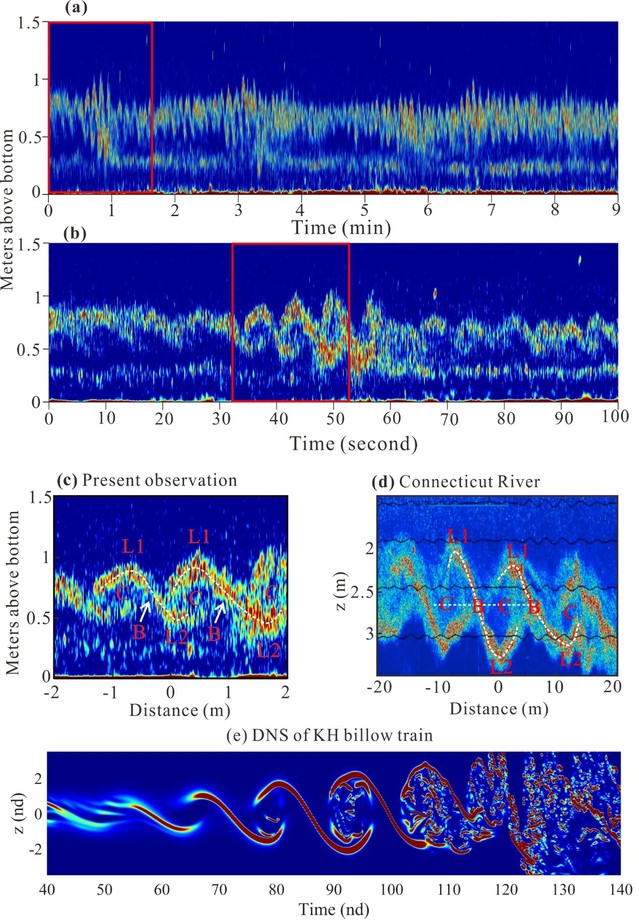Junbiao Tu1, Daidu Fan1,2*, Qiang Lian3, Zhiyu Liu3, Wei Liu1, Alexis Kaminski4, William Smyth5*
1State Key Laboratory of Marine Geology, Tongji University, Shanghai, China
2Laboratory of Marine Geology, Qingdao National Laboratory for Marine Science and Technology, Qingdao 266061, China
3 State Key Laboratory of Marine Environmental Science, and Department of Physical Oceanography, College of Ocean and Earth Sciences, Xiamen University, Xiamen, China
4 Applied Physics Laboratory, University of Washington, Seattle, Washington, USA
5 College of Oceanic and Atmospheric Sciences, Oregon State University, Corvallis, Oregon, USA
*Corresponding authors:
Daidu Fan (ddfan@tongji.edu.cn) and William Smyth(bill.smyth@oregonstate.edu)
Abstract:
Kelvin-Helmholtz (KH) instability plays an important role in turbulent mixing in deep oceans, coastal seas, and estuaries. Though widely observed and studied in thermohaline-stratified waters, KH instability has only rarely been observed in sediment-stratified environments. For the first time, we present direct observations of KH billows on an estuarine lutocline by combining echosounder images with velocity and density measurements. The interaction between velocity shear and the density stratification induced by suspended sediments initiated shear instabilities near the bed, indicated by gradient Richardson number (Ri) < 0.25 in the early stages of the observed billows. Once formed, the instabilities enhanced the vertical mixing of momentum, reducing vertical shear and elevating Ri. Linear instability analysis using measured velocity and density profiles well predicts the vertical location and spatial characteristics of the observed billows. These instabilities are believed to contribute to the vertical mixing, entrainment, and transport of estuarine and coastal sediments.
Full article:https://agupubs.onlinelibrary.wiley.com/doi/full/10.1029/2019JC015383



